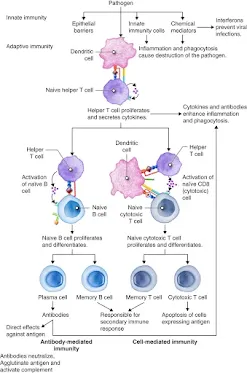Polio: A Comprehensive Overview of the
Disease, Its History, and Eradication Efforts
Introduction
Polio or poliomyelitis is a viral
infection that mostly targets children when they are young. The poliovirus
attacks the nerves and can cause someone to become paralyzed very quickly. Because
vaccination programs have succeeded in most parts of the world, polio is now
rare except in a few countries. This piece examines the background, spread,
symptoms, prevention and worldwide action against polio.
1. What is Polio?
Polio develops when a person is
infected with the poliovirus, a kind of Enterovirus. Three different types of
the virus exist in nature.
·
Type 1
(WPV1) – It is the most widespread and
dangerous form, so it is responsible for most outbreaks.
·
Type 2
(WPV2) – Officially removed from existence in
2015.
·
Type 3
(WPV3) – was declared eradicated in the year
2019.
Mostly, the virus is spread by
touching things that have been contaminated by stool, then putting your hands
in your mouth. Sometimes, COVID-19 can also be spread by breathing in air
droplets.
2. Symptoms of
Polio
Around 70% of those who catch
poliovirus are not aware of any symptoms. But if symptoms do occur, they may be
mild or very serious.
A. Non-Paralytic
Polio (Abortive Poliomyelitis)
·
Fever
·
Sore throat
·
Headache
·
Fatigue
·
If you feel sick
and throw up.
·
Problems in the
neck and back
The symptoms will usually clear up
within a few days without causing paralysis.
B. Paralytic
Polio (Less than 1% of Cases)
For more serious cases, the virus can
kill motor neurons in the spinal cord which causes:
·
The loss of leg
muscle function is known as flaccid paralysis.
·
Bulbar polio
causes trouble with breathing, swallowing and speaking because it affects the
brainstem.
·
Muscle weakness
and tiredness that occur many years after an initial polio infection is called
post-polio syndrome.
C. Post-Polio
Syndrome (PPS)
Sometimes, polio survivors face new
health problems long after being infected.
·
Progressive
muscle weakness
·
Fatigue
·
Joint pain
·
Breathing
difficulties
3. Transmission
of Polio
Polio is very easy to spread because
it is transmitted by:
·
Fecal-oral
route: Through the fecal-oral route, the
virus may be spread when an infected person’s stool gets into water or food.
·
Respiratory
droplets: The virus can spread uncommonly
through saliva or mucus droplets, even though this is less common.
·
Asymptomatic
carriers: People who don’t show any
symptoms can still pass on the virus to others.
Sanitation problems and dirty water raise the
chance of getting the disease.
4. History of
Polio
The first mention of polio can be seen
in ancient Egyptian carvings showing people with weakened limbs. Yet, the worst
outbreaks happened around the late 1800s and early 1900s mainly in Europe and
North America.
·
In 1894, Vermont,
USA, saw the first major case of polio.
·
An outbreak in
1916 killed 6,000 people in New York City.
·
In 1952, more
than 58,000 Americans were infected with polio and thousands ended up
paralyzed.
·
Dr. Jonas Salk
invented the IPV or inactivated polio vaccine, in 1955.
·
In 1961, Dr.
Albert Sabin introduced OPV, and it was quickly used because it was easy to
give.
5. Prevention and
Vaccination
Preventing polio can best be achieved
by vaccination. There are two main kinds of vaccines used around the world.
A. Inactivated
Polio Vaccine (IPV)
·
Made with dead
poliovirus.
·
Given as a shot
in the leg or arm.
·
There is no
chance for vaccine-derived polio.
·
Available in
countries that have gotten rid of polio (for example, the U.S. since 2000).
B. Oral Polio
Vaccine (OPV)
·
Has a live virus
that has been weakened.
·
Given by putting
drops into the eyes.
·
Enhances
intestine immunity, thereby decreasing the number of people infected.
·
Sometimes, it
changes and starts to infect people with vaccine-derived poliovirus (VDPV).
Global
Vaccination Efforts
The GPEI started in 1988 and has cut
the number of polio cases by 99.9% so far. Important strategies for your
business include:
·
Vaccination
drives involving large groups.
·
Observation of
the spread of outbreaks.
·
Vaccination teams
going door to door in areas at high risk.
6. Polio
Eradication Progress
Since the GPEI started, important
progress has been achieved.
·
In 1988, there
were 350,000 cases reported worldwide.
·
Last year, there
were only 12 cases of wild polio in the world (only in Afghanistan and
Pakistan).
·
Wild polio was
eradicated in Africa in 2020.
But some problems continue to arise:
·
VDPV is spread in
communities where people are not well vaccinated.
·
Vaccination in
Afghanistan and Pakistan is not possible in many far-off, hard-to-reach zones.
·
Misinformation
about vaccines results in fewer children getting them.
7. The Future of
Polio Eradication
The WHO wants polio to be totally
eliminated from the world by 2026. The main things to do are:
·
Boosting regular
immunization.
·
Enhancing the
sanitation and hygiene of people.
·
Increasing
monitoring to find out about outbreaks as soon as possible.
·
Moving from OPV
to IPV to eliminate the dangers from VDPV.
Conclusion
This disease was once so much feared
because it often left children paralyzed and could be fatal. Because of
vaccines and worldwide health work, the world is close to totally getting rid
of it. Still, we must keep vaccinating and keep an eye on the disease to avoid
polio coming back. If people keep working, future generations could be
polio-free.
References
·
World Health
Organization (WHO) – Program for Eliminating Polio.
·
Centers for
Disease Control and Prevention (CDC) – How to Prevent Polio.
·
Reports from the
Global Polio Eradication Initiative (GPEI).
This article gives a thorough summary
of polio, its consequences and how it is being fought. If this information
helped you, tell others about why vaccination is so important!







Post a Comment
0Comments